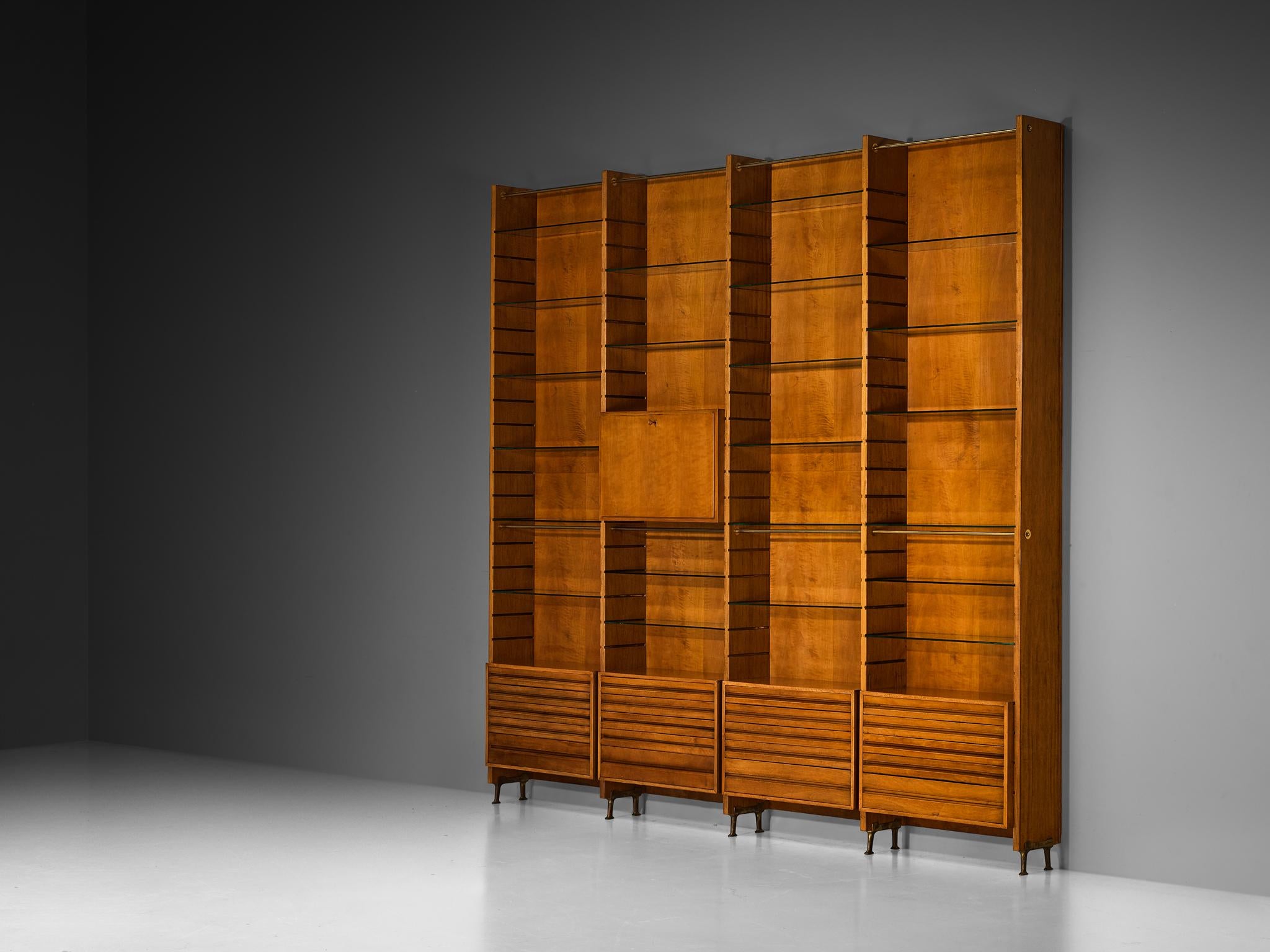
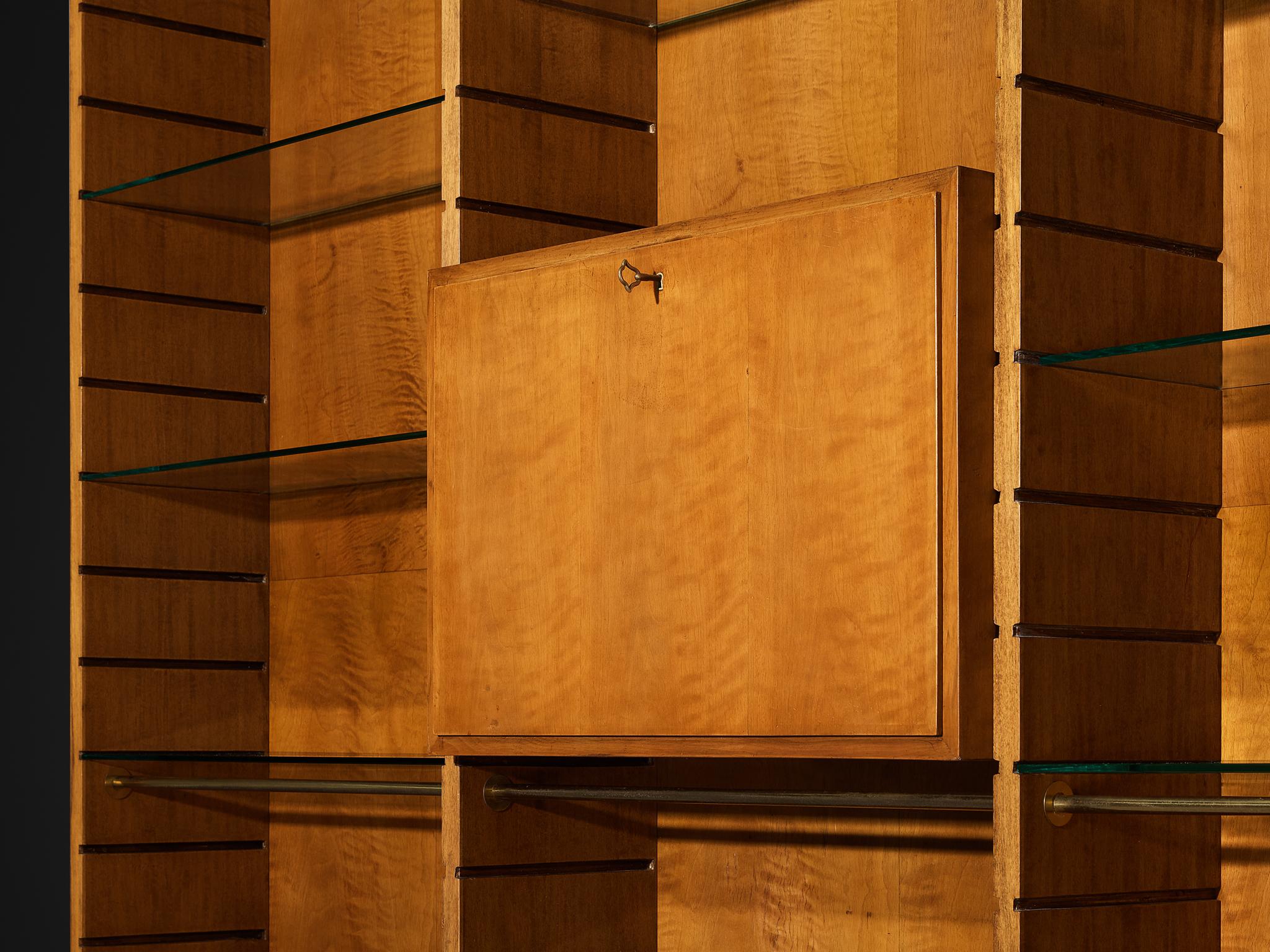
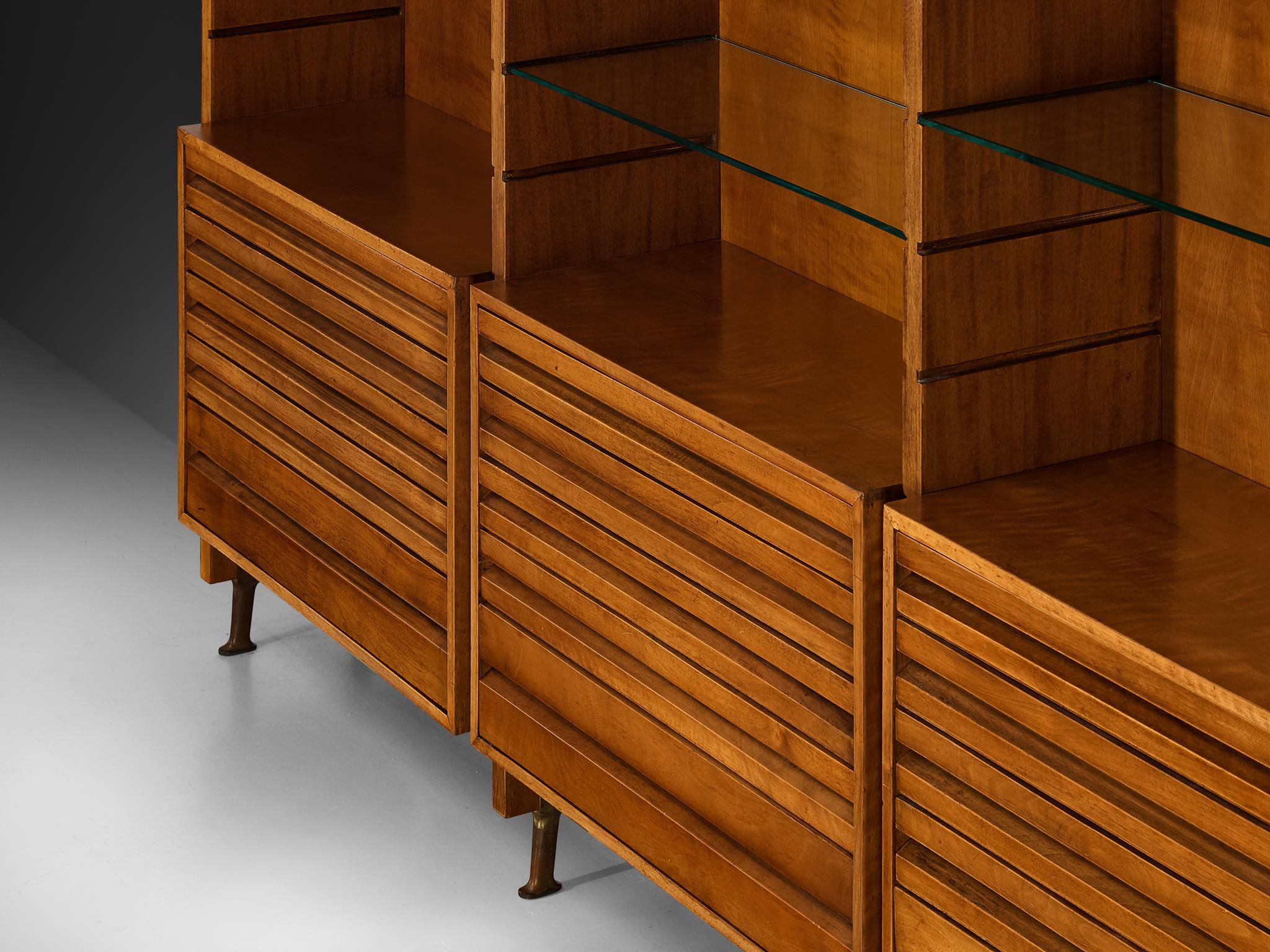
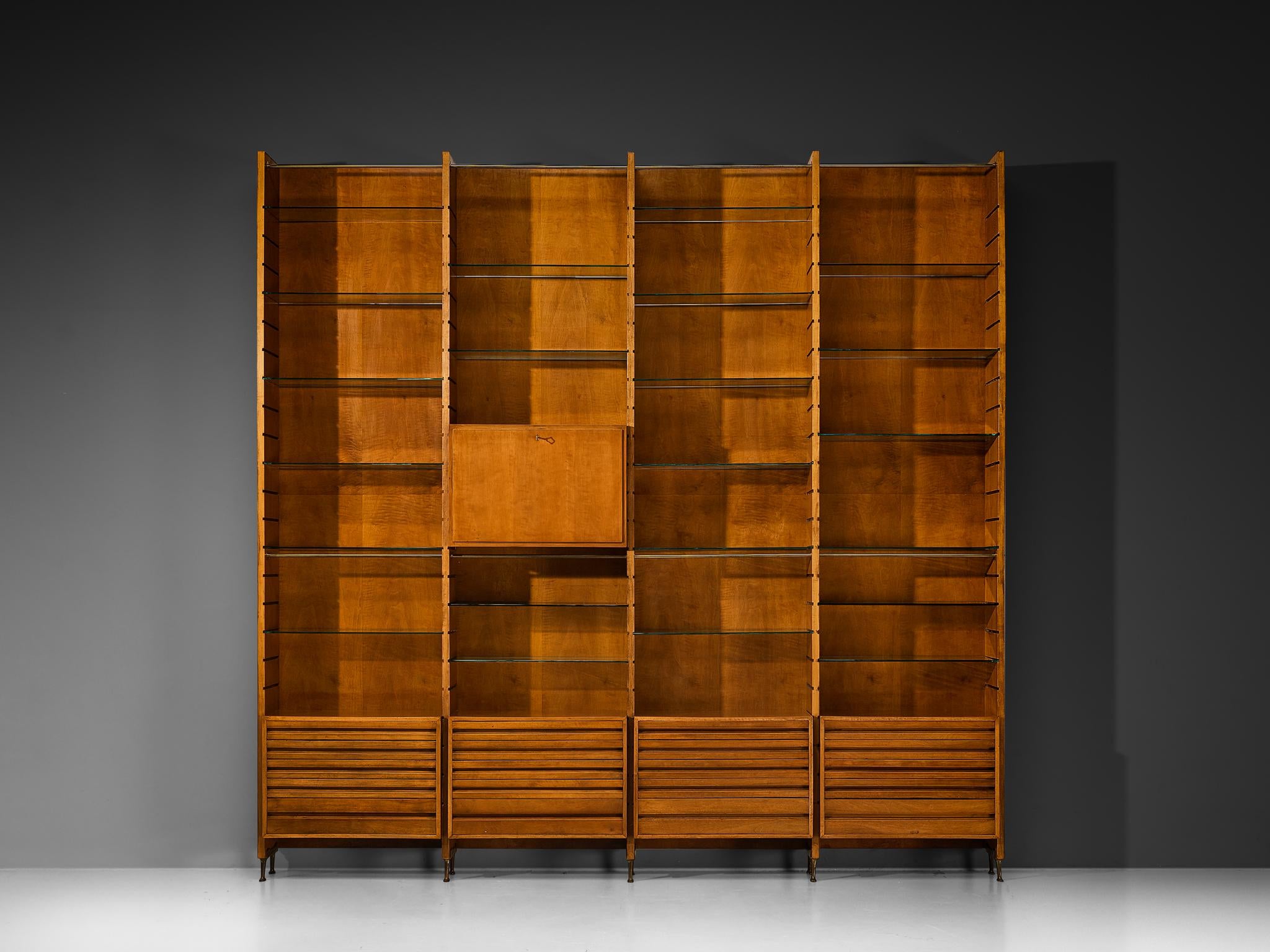
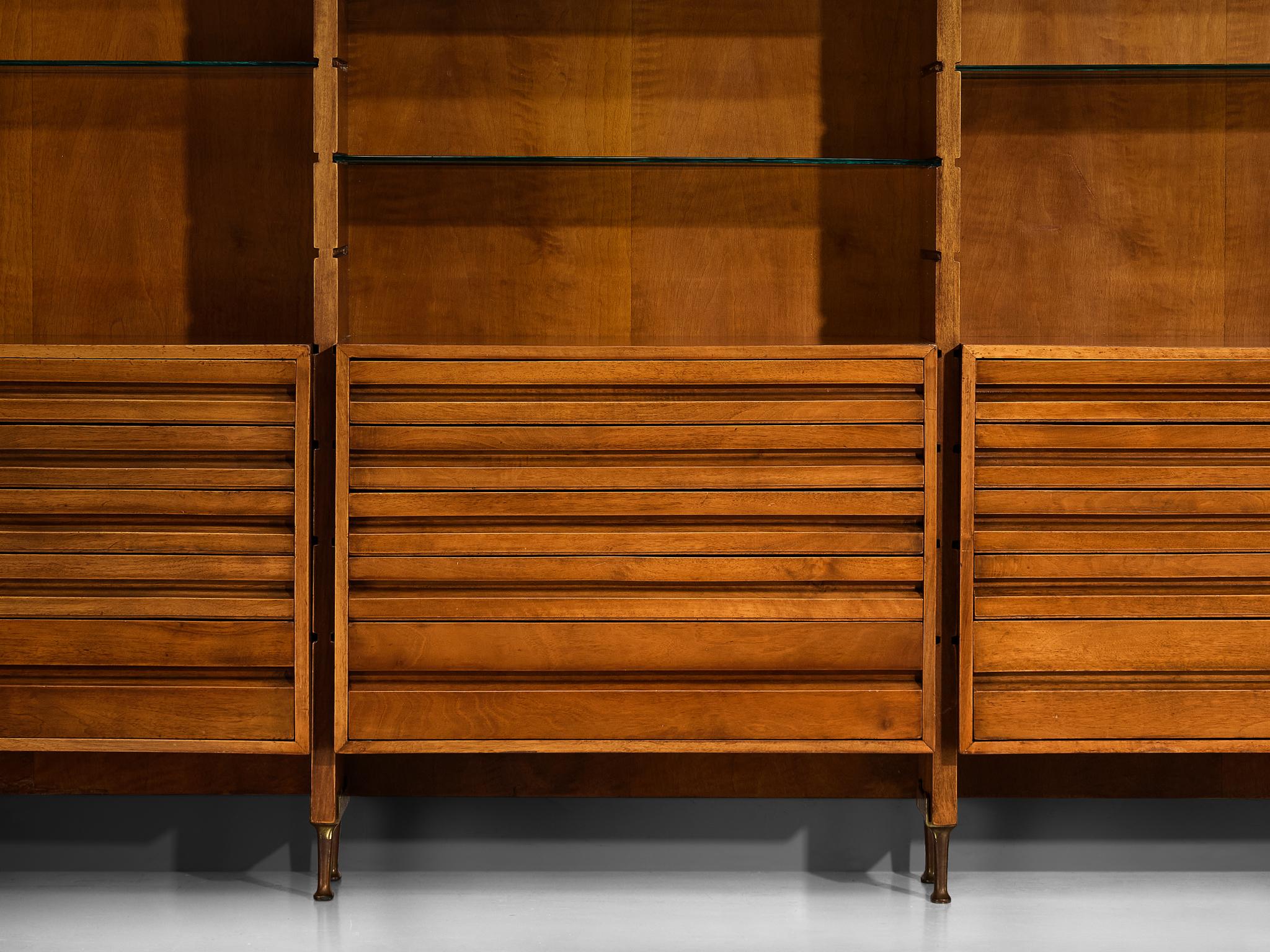
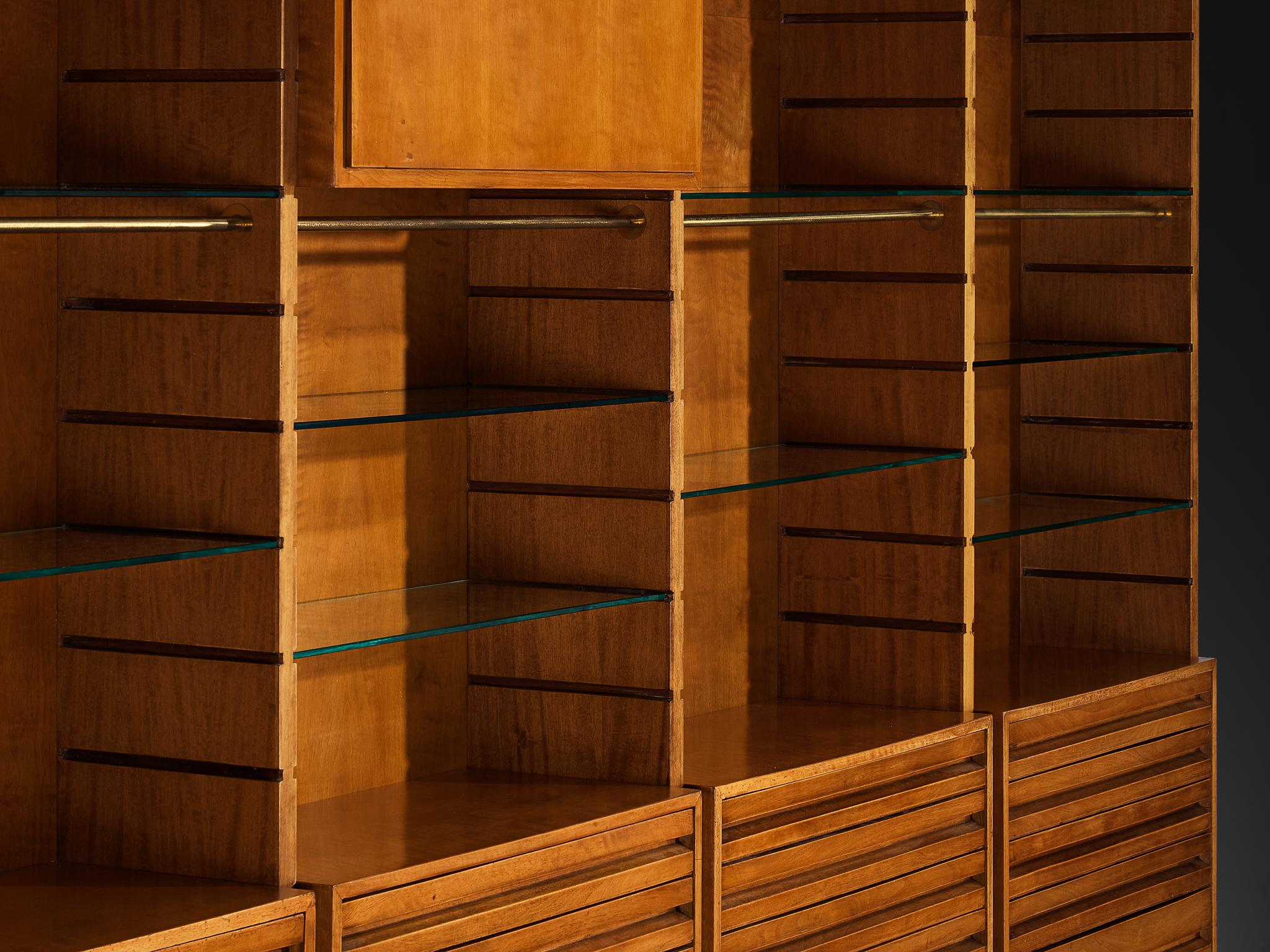
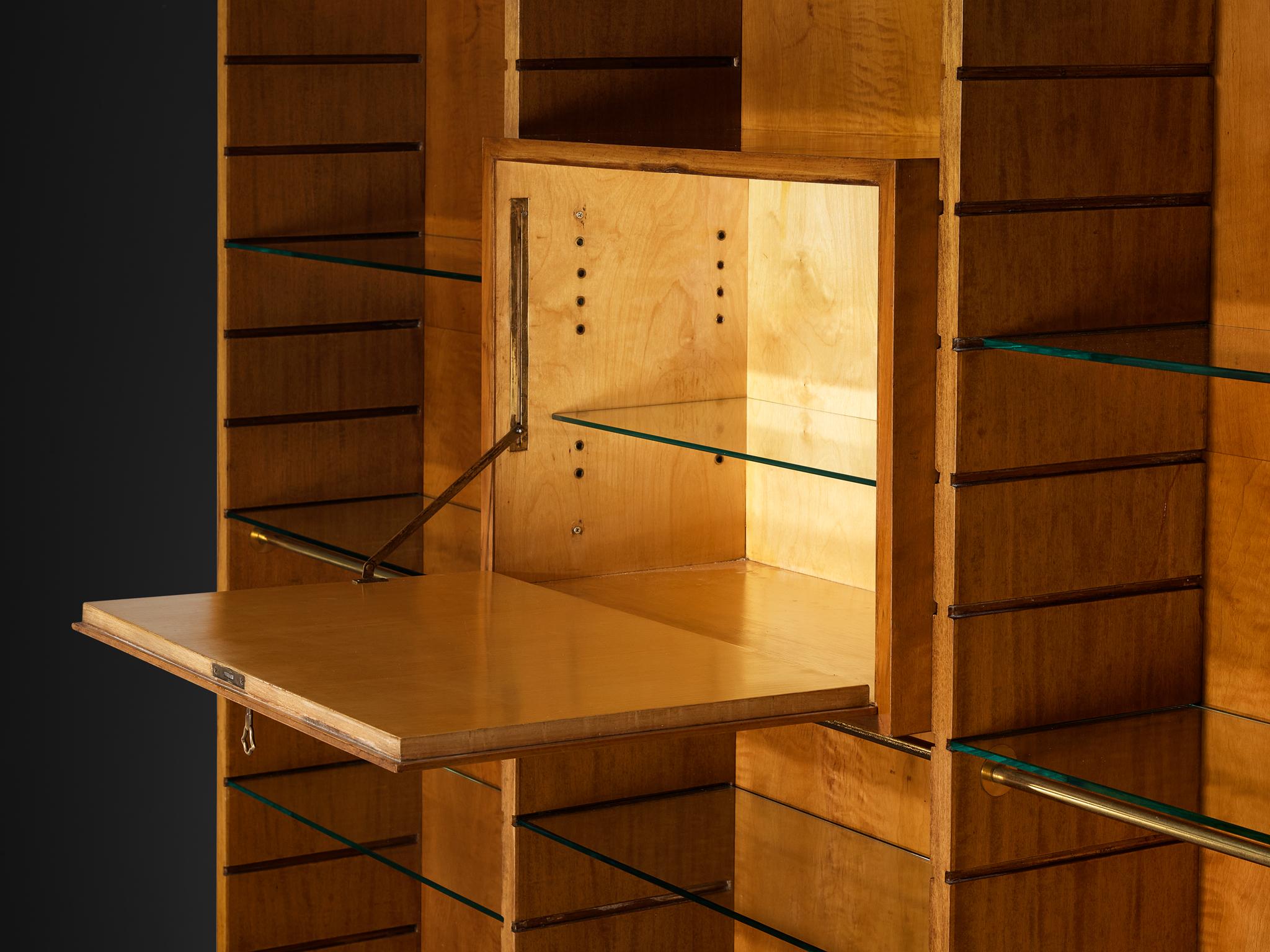
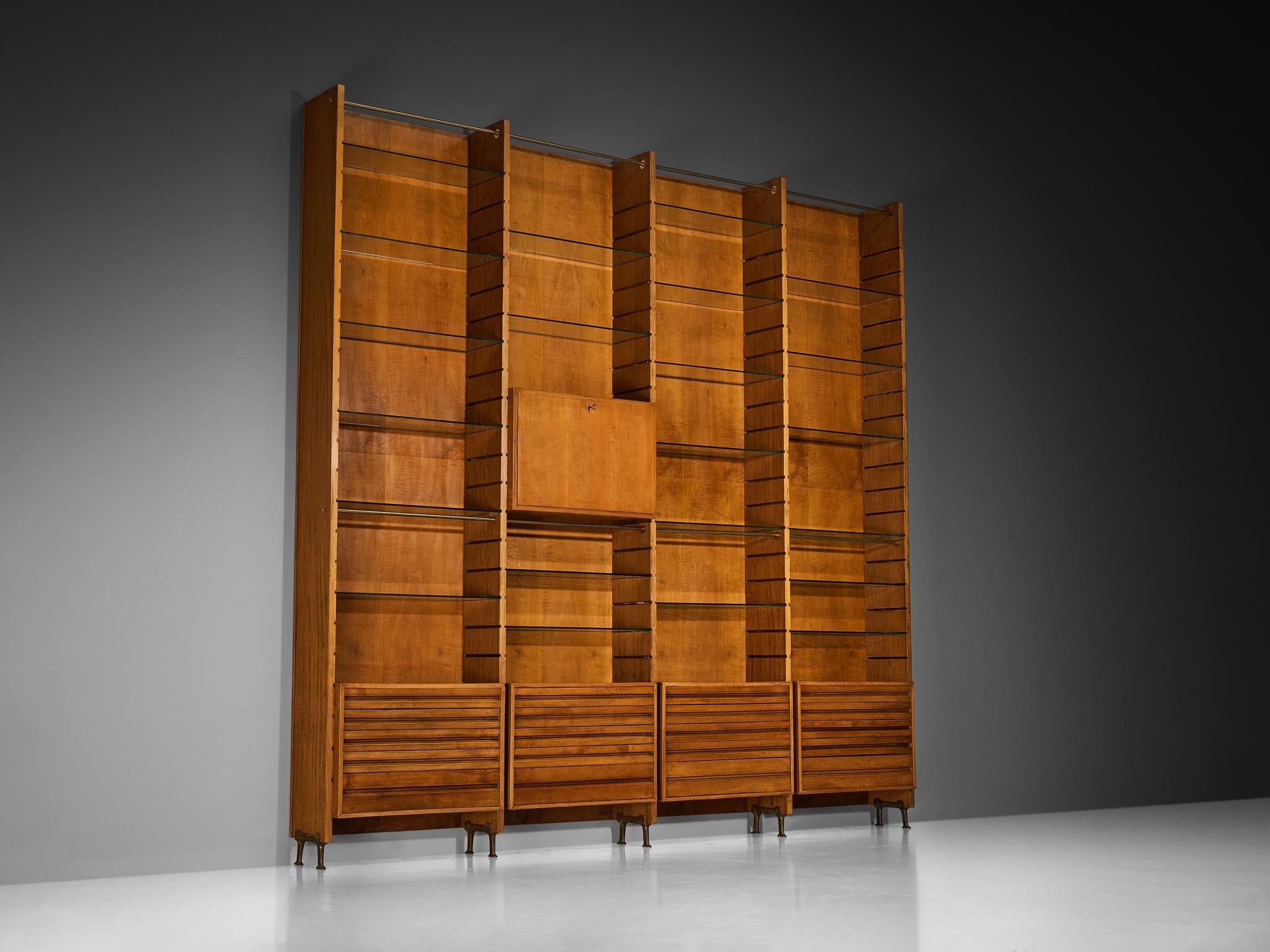
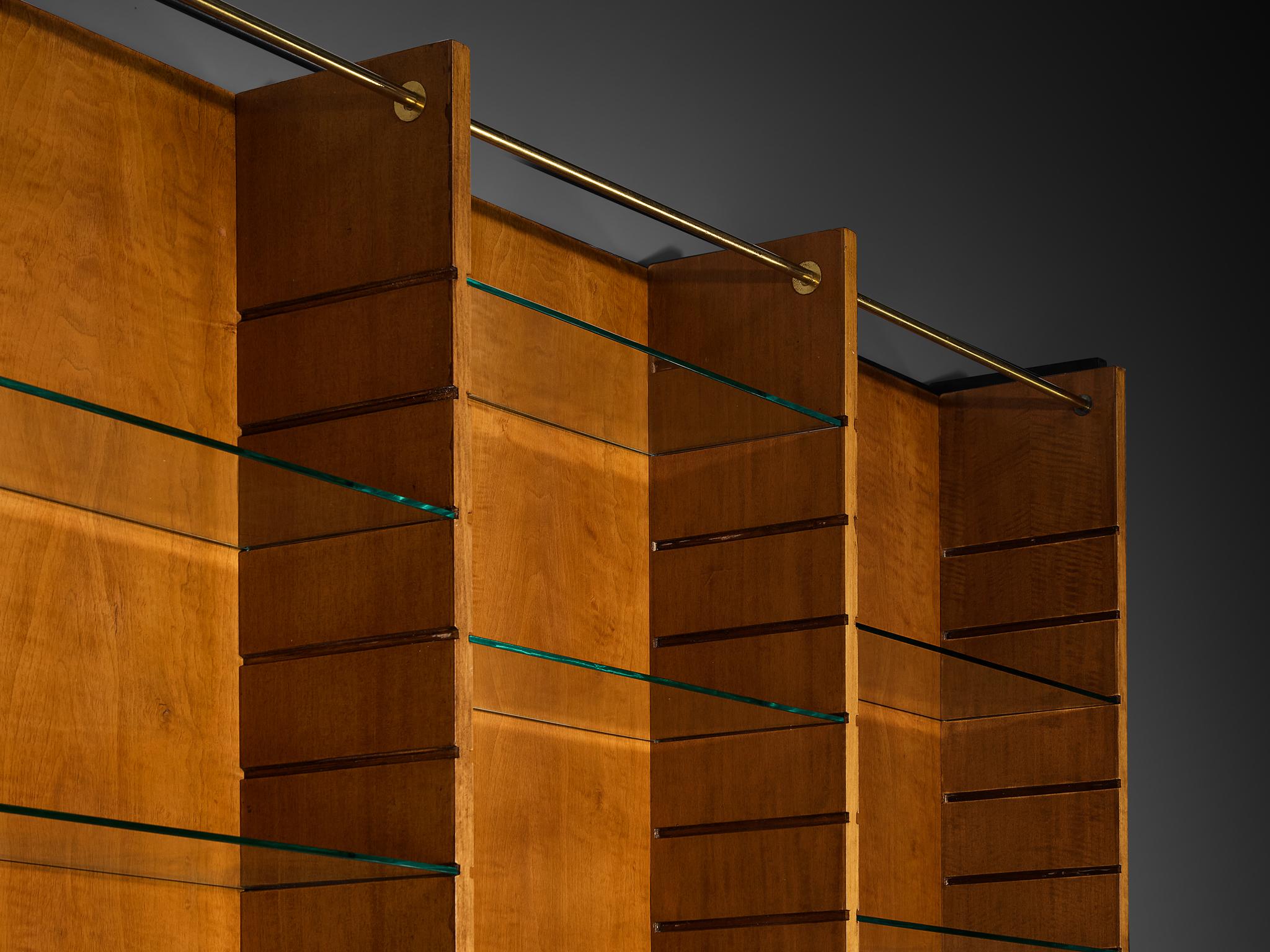
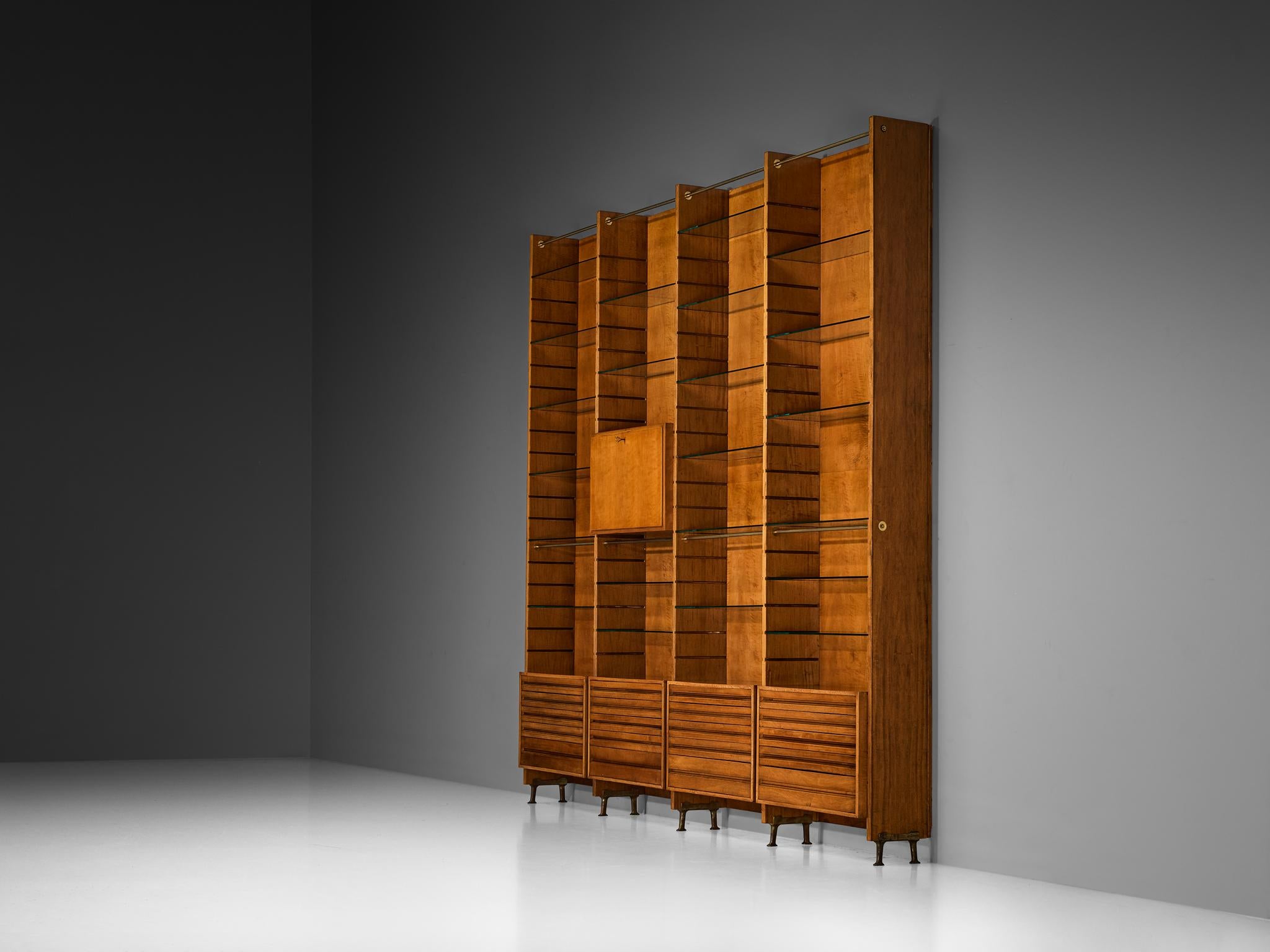
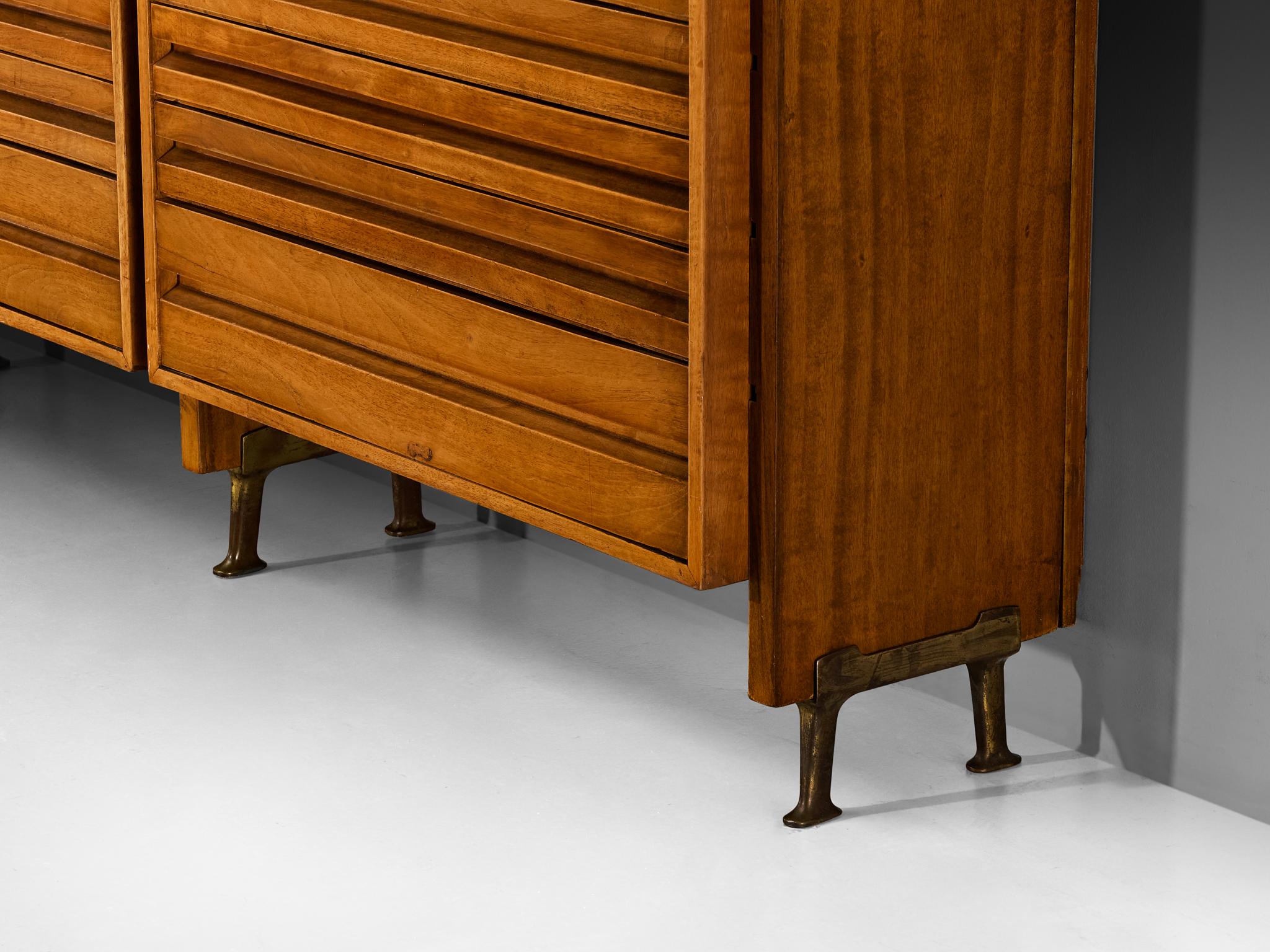
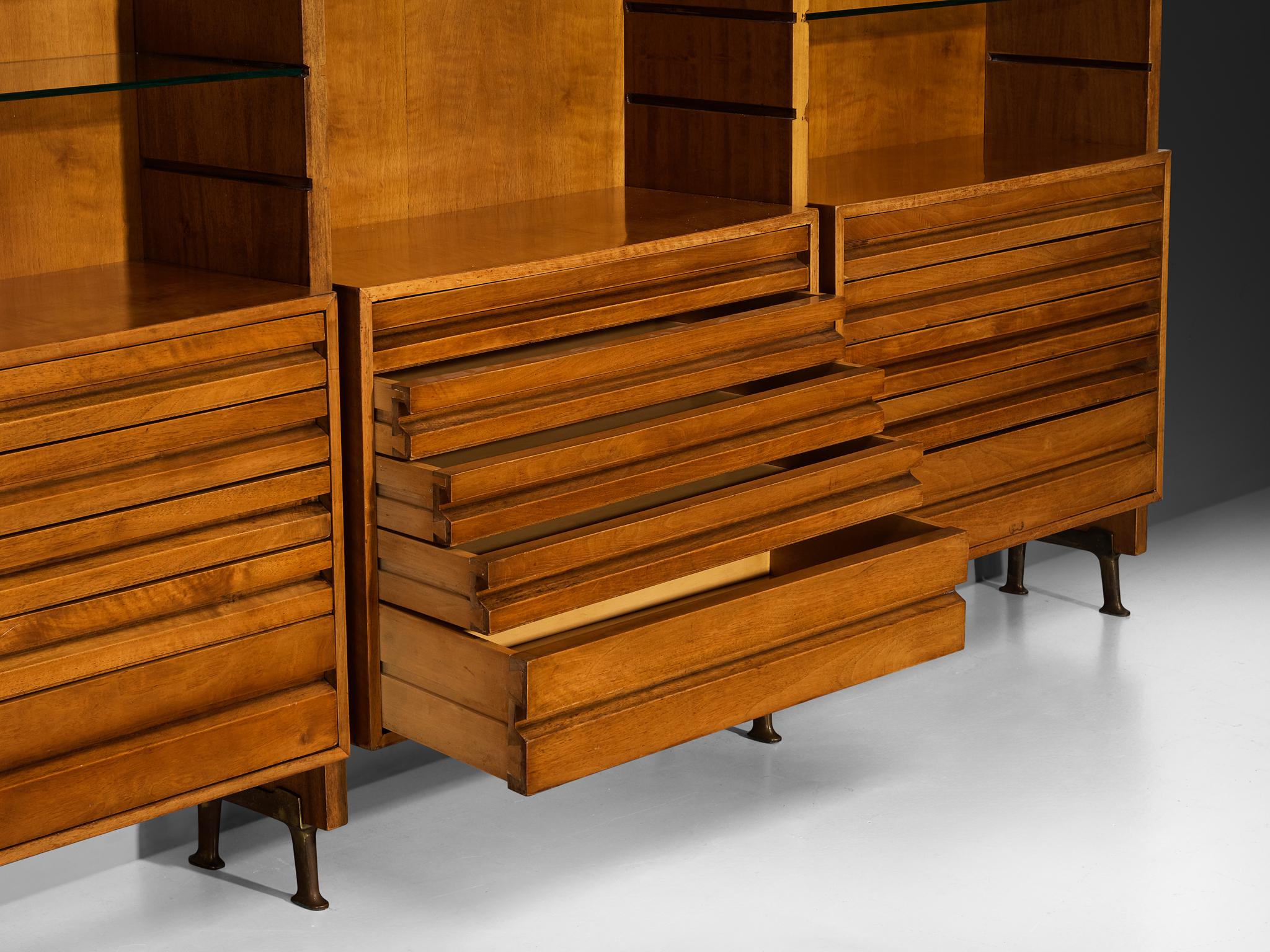
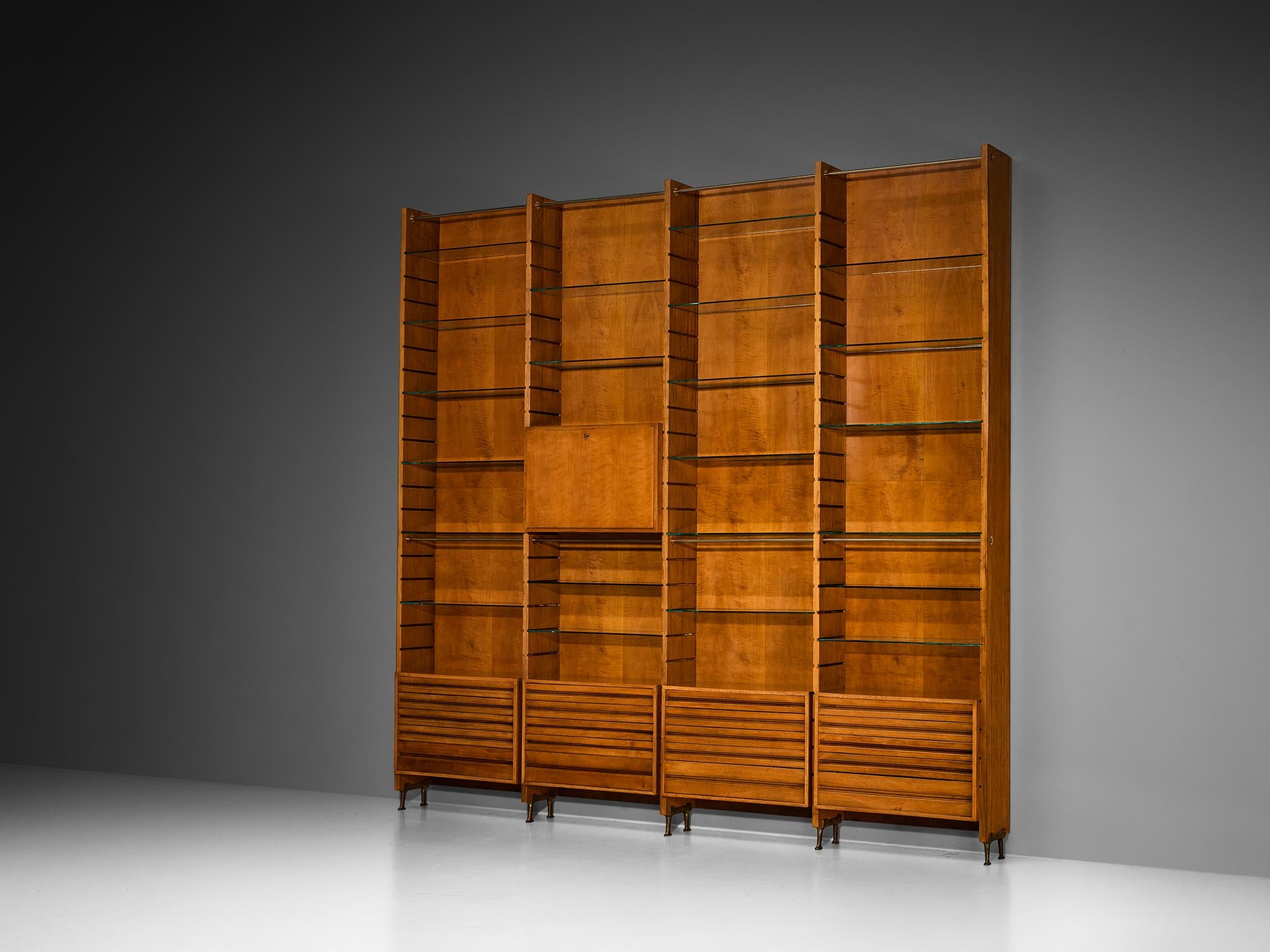
Studio B.B.P.R. Large Library in Walnut and Glass
Studio B.B.P.R. (Lodovico Barbiano di Belgiojoso, Enrico Peressutti, Ernesto Nathan Rogers), library, walnut, glass, brass, Italy, late 1960s.
This wonderful bookcase is designed by Studio B.B.P.R. and manufactured by Pierino Frigerio in Cantù. The unit consists of four columns each equipped with drawers at the bottom and glass shelves. One row has a cabinet with a door that can be placed freely. This design by B.B.P.R. is truly enchanting, the wonderful detailing in the drawers, the richness of the walnut, the playful brass feet and the sheer height.
Studio B.B.P.R. was an Italian architectural partnership founded in Milan in 1932 by Gianluigi Banfi (1910-1945), Lodovico Barbiano di Belgiojoso (1909-2004), Enrico Peressutti (1908-1976) and Ernesto Nathan Rogers (1909-1969) who had studied at the Politecnico di Milano. B.B.P.R. was thus an acronym formed from the first letters of their family names. The architects found each other in their opposition to fascism in Italy in the 1930s and 1940s during Mussolini's autocratic regime. The architects therefore believed in developing a style that would have no references to contemporary politics. During the Second World War, they all joined the resistance. However, Rogers, a Jew, fled to Switzerland and both Belgiojoso and Banfi were deported to the Mauthausen concentration camp in Austria, where Banfi died in 1945. Despite the immense loss of Banfi, their architectural practice continued in the same name as before after the war. Especially during the 1950s, they created many of their great projects. With their designs, they strongly reacted against the International Style with its rectilinear forms and taut plane surfaces that have been completely stripped of applied ornamentation. Instead, the group enriched their buildings with medieval references. For B.B.P.R., their philosophy on art and architecture is somewhat between tradition and modernism; their use of post-beam structures and modular elements parallels with the constructive thinking of modern architects. However, as modernism rejects the existence of historical forms, B.B.P.R. reinterprets history's heritage and continues with respect for the work of their predecessors. Ernesto Nathan Rogers referred to it as “preesistenze ambientali” (the pre-existing environment) and adopt a “caso per caso” (case by case) interpretation to work with, instead of against, the surroundings. One of their well-known designs is the creation of the Torre Velasca in Milan, with strong references to medieval architecture. The architects were also frequently employed to create interior spaces altogether with furniture designs.
VAT within the EU: When buying or delivering an item within the EU, VAT usually applies and will be added.
Choose options













Product Details